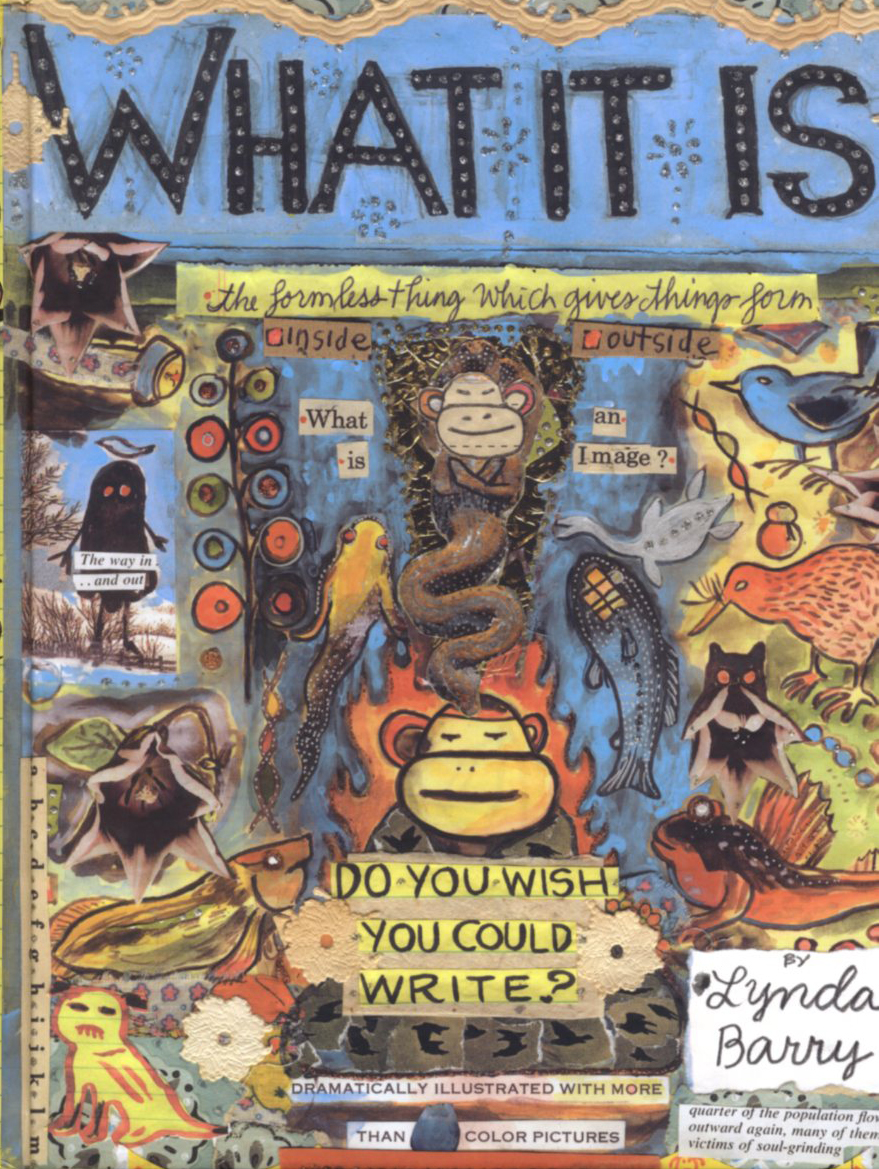Graphic Lit: How-to books

One of the great draws about comics is that it has such low overhead. All you need is pen and paper and presto! You’re ready to make a comic.
Of course, there’s a bit more to it than that, as the following “how-to” books show:
“What It Is”
by Lynda Barry, Drawn and Quarterly, 209 pages, $24.95.
Part autobiography, part writing guide, part philosophical treatise and all pure genius, Barry uses a variety of artistic tools — including collage, watercolor and pen and ink — to examine the nature and central importance of art and the creative impulse while touching on themes like memory, imagination and myth along the way.
Barry writes with genuine awe about the creative process, attempting to define near-indefinable terms and ideas (“What is an image?”) while delving into her own childhood and, by extension, our own as well. For her, art is more an act of self-discovery than communication, and getting the work out on paper is more important than finding an audience or determining whether it’s “good” or “bad.”
More than just a mere tutorial (though it excels as that), this is a rich and rewarding book that should be read even if you’re not planning to draw. But especially if you are.
“Drawing Words & Writing Pictures”
by Jessica Abel and Matt Madden, First Second, 304 pages, $29.95.
Perhaps you’re looking for a more definitive, textbooklike guide to making comics. If so, this meaty book, based on classes Abel and Madden teach at the School of Visual Arts, more than suffice.
Just about every aspect of comics production is covered, from how to lay out a page to lettering, using computers, developing your characters, inking and much more. Each chapter comes with a “homework” section and exercises, making this book more of a college-level class than a manual.
There have been a lot of “how to make comics”-type books, most of them superficially focusing on rendering and style. “Drawing Words” is a much more thoughtful, comprehensive book that I’d recommend to anyone interested in making comics. I predict it will quickly be the definitive go-to book for budding cartoonists.
“How to Draw Stupid and Other Essentials of Cartooning”
by Kyle Baker, Watson-Guptill Publications, 112 pages, $16.95.
Sometimes though, you want your advice quick and dirty. Enter Kyle Baker, cartoonist extraordinaire (“Nat Turner,” “Special Forces”).
Baker eschews a lot of the traditional how-to-draw advice (Baker on perspective: “Draw faraway things tiny and nearby things big”) in favor of some very useful and no doubt hard-won tips on things like how to stand out (“don’t do the same thing everyone else does”), design characters (“a good cartoon character should be easy for everybody to draw”) and be funny (“hitting is funny”).
This blend of no-nonsense advice and irreverent humor is about as far away from Lynda Barry’s approach as you can get, but if you’re looking to make cartoons in any sort of professional capacity, it’s also essential. Plus, Baker’s a very funny guy.
Copyright The Patriot-News, 2008
Labels: comics, drawn and quarterly, first second

0 Comments:
Post a Comment
<< Home